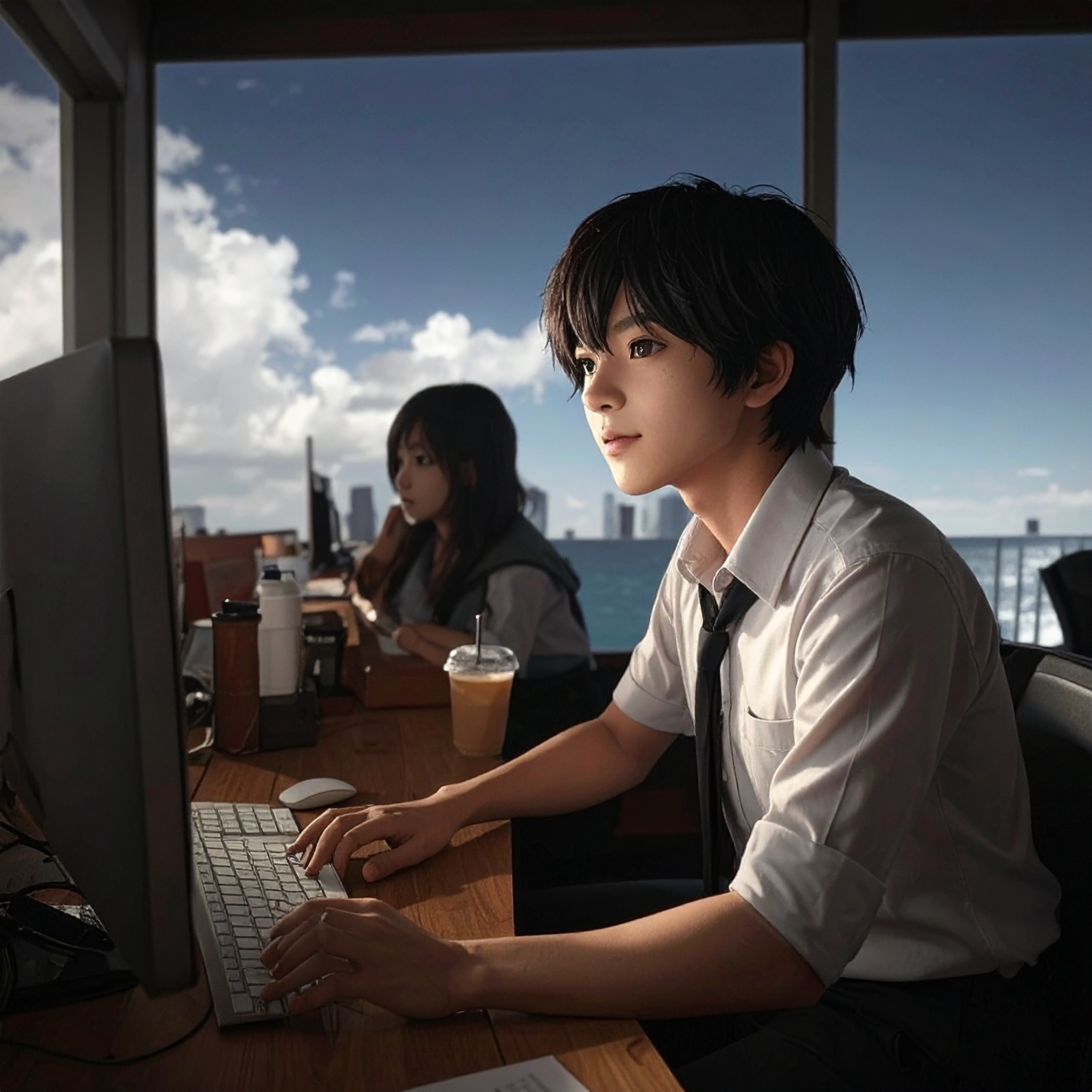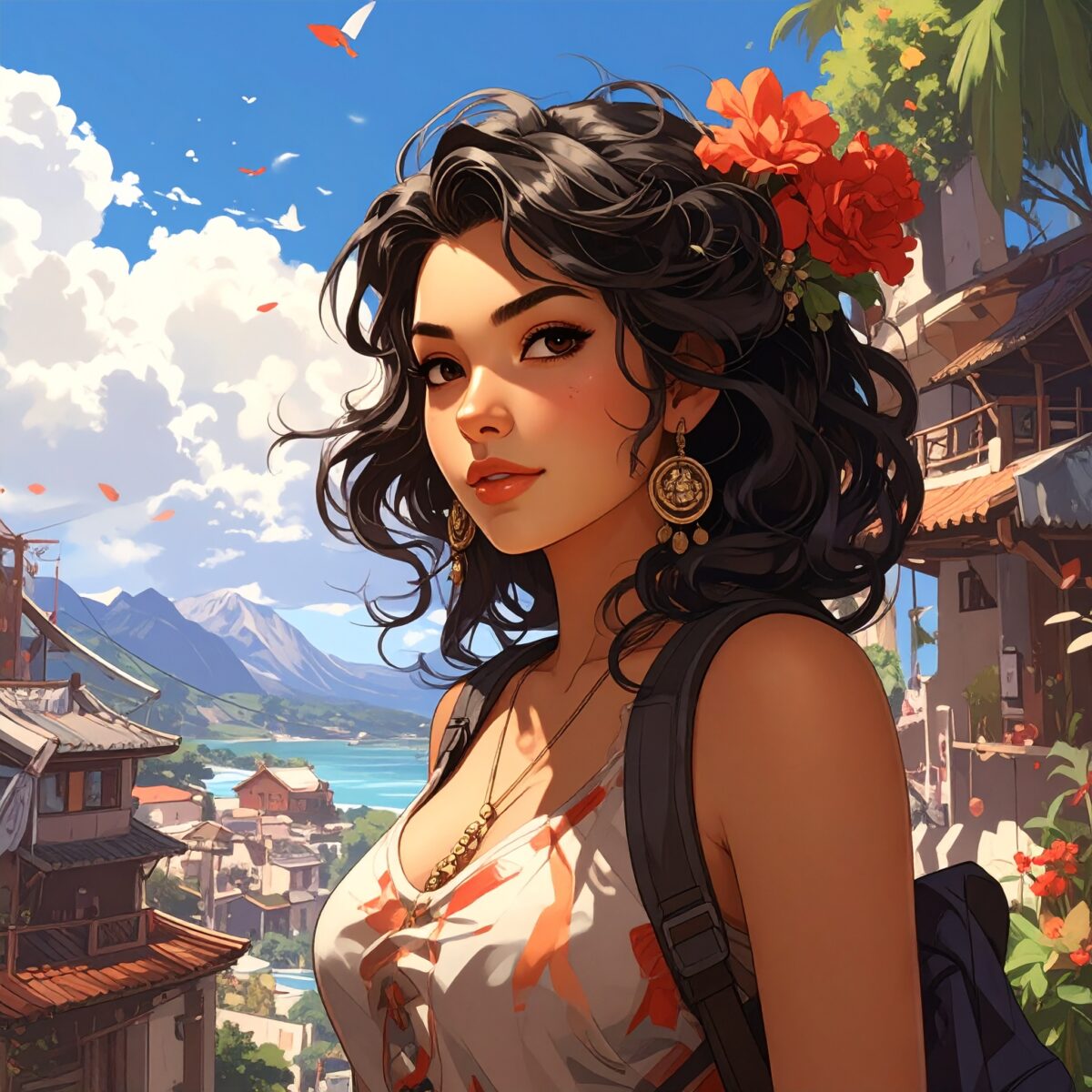Soft light filtering through a deep forest. The quiet passage of time in a tatami-mat room. A girl running through a windswept field, seen from behind.
The landscapes depicted in Studio Ghibli films are serene, gentle, and profoundly nostalgic. These scenes, so uniquely Japanese in spirit and atmosphere, continue to inspire a new generation of international creators. Around the world, artists are now striving to weave that unmistakable “Ghibli essence” into their own work.
But this is no longer mere imitation. Rather, it marks a growing reverence for the emotional landscapes that Ghibli so delicately portrayed. Across cultures and artistic boundaries, creators are now carrying forward this spirit with care, as an homage to the heart of Japanese aesthetics.
The Art of “Nothing Happening” – A Subtle Luxury
One of the most distinctive features of Studio Ghibli films is the presence of “silent moments” woven between story beats—scenes where nothing seemingly happens. Whether it’s the iconic bus stop scene in My Neighbor Totoro or the quiet train ride in Spirited Away, these moments may not advance the plot, yet they linger vividly in the memory of viewers.
This deliberate use of ma—the Japanese concept of meaningful pause—has deeply influenced Western animators and filmmakers. Rebecca Sugar, creator of the acclaimed American animation Steven Universe, once said that “the silence in Hayao Miyazaki’s films was my hero.”
In a world where bold action and rapid dialogue often dominate the screen, Ghibli taught us a different truth: that emotion can be found not in noise, but in stillness. Through serene landscapes and quiet time, Ghibli showed how powerful storytelling can emerge from silence.
When Scenery Becomes a Character
In Studio Ghibli films, nature and cityscapes are far more than mere backdrops—they are living, breathing presences as vital as the characters themselves. Whether it’s the European-inspired port town in Kiki’s Delivery Service, the sky and sea of the Adriatic in Porco Rosso, or the mystical forests of Princess Mononoke, each setting exudes a unique atmosphere, an invisible spirit that defines the world around it.
This philosophy has deeply influenced the aesthetics of contemporary indie animation and game design. Titles like Canada’s Spiritfarer and Eastward embody landscapes that don’t just decorate the story—they move it forward. Much like Ghibli, these works are crafted to draw the viewer into their world simply through the act of observation.

From Imitation to Personal Storytelling
In the past, many works emulated Studio Ghibli by mimicking its character designs and animation style. But today’s international creators are moving beyond surface-level imitation—they are embracing the spirit of Ghibli rather than its form.
This spirit is expressed through a gentle storytelling rhythm, the subtle use of ambient sounds, a reverent relationship with nature, and deeply introspective characters. These are elements of what could be called Ghibli’s “emotional grammar,” cultivated over decades. By weaving their own cultures and stories into this framework, artists around the world are now creating something entirely new.
Take, for instance, the French animated short Maman Pleut Des Cordes (Mum is Pouring Rain). Its quiet portrayal of a mother and child’s relationship through nature carries the warmth reminiscent of Totoro, yet the narrative remains distinctly French. This marks a shift: artists are no longer replicating Ghibli, but using it as a lens through which to express their own worlds.
When Admiration Becomes Dialogue
More and more international illustrators are creating Ghibli-inspired backgrounds, and students across the globe are studying Ghibli-style animation in depth. On platforms like YouTube, TikTok, and art-focused social media, hashtags such as “Inspired by Ghibli” are constantly updated, showcasing reinterpretations of the “Ghibli aesthetic” through the lens of each creator’s cultural background.
In this growing movement, the relationship is no longer a one-way admiration of “Ghibli = Japan.” Instead, a new kind of dialogue is emerging—one where creators around the world engage with the values Ghibli represents. These are not mere imitations, but heartfelt resonances. This marks a quiet evolution: from imitation to mutual resonance, from admiration to conversation—Ghibli’s spirit has become a shared language across cultures.
Epilogue — When the Memory of Scenery Inspires Creation
The landscapes of Studio Ghibli are not merely beautiful—they create a sense of belonging in the hearts of those who see them. Within these scenes dwells a gentle gaze, one that listens to silence and seeks to understand others.
As creators around the world are drawn to these landscapes and begin to tell their own stories through them, what emerges is not a one-way flow of cultural influence. Instead, it becomes a loop of dialogue—a quiet exchange between memory and imagination.




